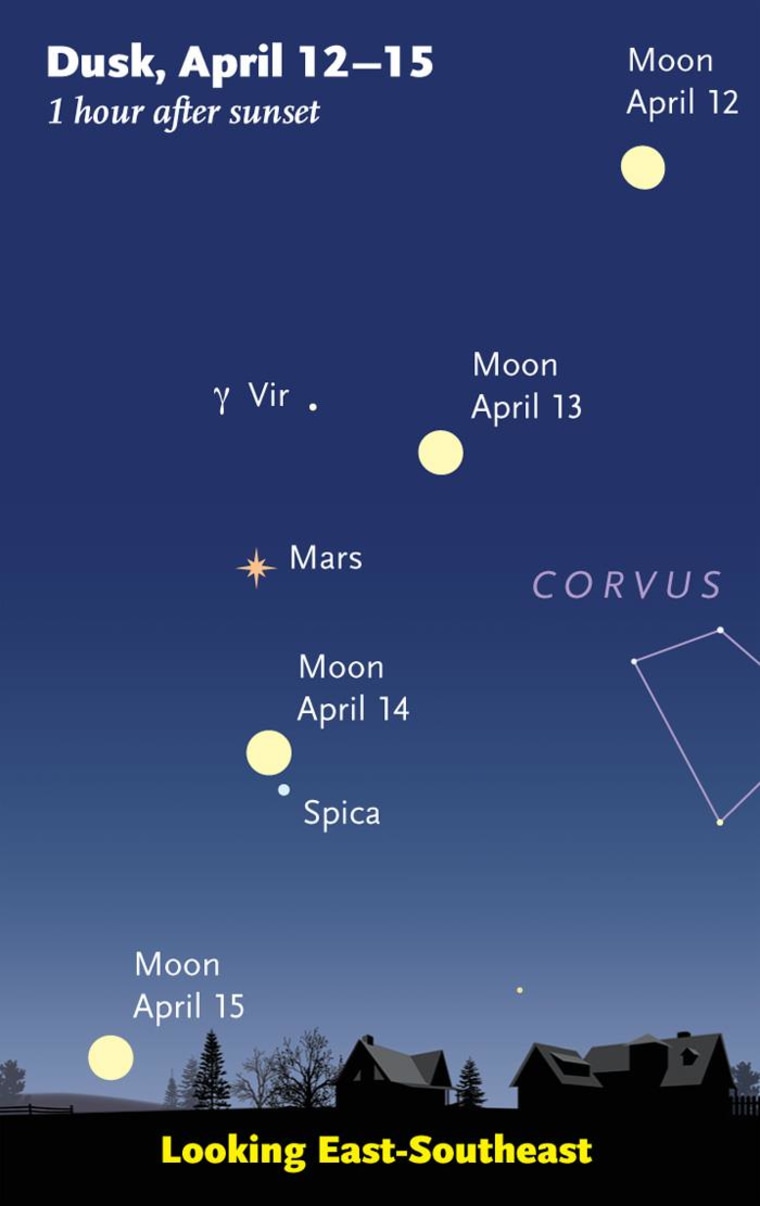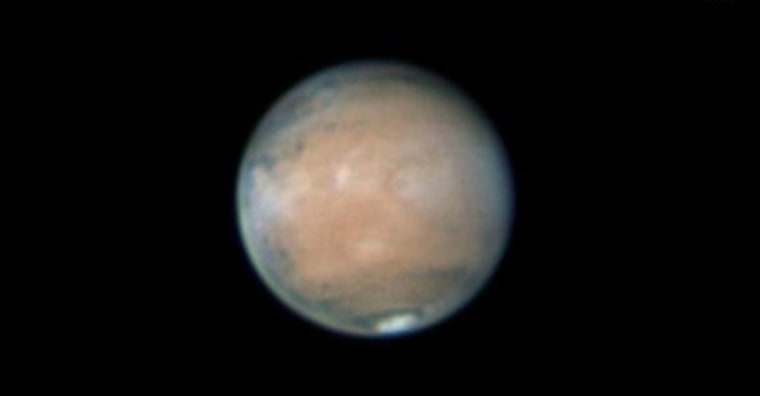If you want to see Mars at its best, now's your time: This month, the Red Planet looks bigger and brighter than it has for the past six years.
That may sound like the Great Mars Hoax — the occasional (and totally false) claim that Mars will loom as big as the moon in the night sky. But in this case, the claim is totally true. This month, Mars will have its closest encounter with Earth since December 2007.
The reason has to do with orbital mechanics. As Earth and Mars trace their elliptical orbits around the sun, the distance between the two planets varies dramatically. There are times when the separation amounts to almost 250 million miles (400 million kilometers). On April 14, that separation narrows to a mere 57 million miles (92 million kilometers).
"These opportunities only come about every two years," said Alan MacRobert, senior editor for Sky & Telescope magazine. "Most of the time, Mars is pretty darn far away."

Mars is easy to spot in the night sky: For skywatchers living in mid-northern latitudes, it sparkles like a yellow-orange gem in the southeast just after dark. By the middle of the month, the planet will get as bright as the star Sirius. Mars is currently moving through the constellation Virgo — which means it makes a pretty pairing with Spica, a nearby blue-white star.
For a real treat, gaze at Mars through a telescope. Under optimal viewing conditions, even a 4-inch telescope can reveal light and dark regions on the planet's disk, and maybe even dust storms.
The northern hemisphere is tipped toward Earth, highlighting the north polar cap in Martian springtime. "The polar cap shrinks as the season advances and exposes the dark ground beneath it," MacRobert said. "You can follow this week by week with a good amateur telescope."
To identify the features you see through the lens, use Sky & Telescope's Mars Profiler to generate a map that's just right for your coordinates and observing time. Check out Damian Peach's guide to photographing Mars, and connect with other skywatchers via your local astronomy club or the ALPO Mars online portal.

While you're looking up, take in the night sky's other sights. Jupiter is even brighter than Mars, and situated close to the familiar constellation Orion. EarthSky can point you in the right direction. With good sky conditions, you should be able to make out Jupiter's biggest moons with a pair of binoculars. EarthSky's viewing guide also shows you how to spot Saturn and Venus later in the night (or early the next morning).
This is also a great time for spotting the International Space Station, which can shine brighter than Venus as it speeds across the sky. NASA's "Spot the Station" website tells you where and when to see it.
This month's biggest sky highlight comes on April 15, when the first total lunar eclipse since 2011 takes place. North America is prime viewing territory for this eclipse, which reaches its peak with 78 glorious minutes of totality beginning at 3:06 a.m. ET. Save the date: We'll tell you more about the eclipse in the days to come.
